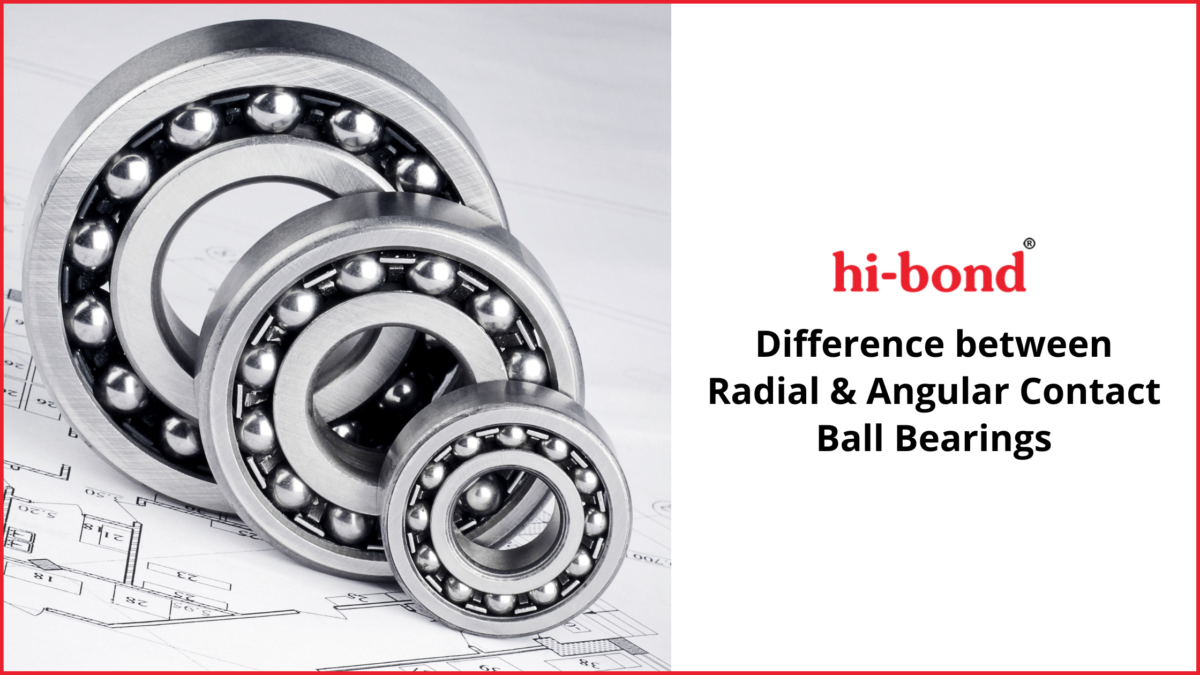In the machinery field, there is a requirement for precision and accuracy, which is of prime importance. For this, the choice of bearings is of prime importance in deciding mechanical systems’ overall performance and durability. Amongst the different types of bearings available in the market, Angular contact and radial ball bearings stand out due to their characteristics and performance.
In this blog post, we will provide you with a detailed discussion regarding the primary difference between angular contact ball bearings and radial ball bearings. It also includes various details, including design, functionality, and attributes. You can find different types of bearings and bushings from reliable manufacturers globally.
A Brief Overview Of Radial Ball Bearings Effective for Radial Load Management
Radial Ball Bearings, as their name implies, are specifically crafted to manage forces that act at a right angle to the shaft’s axis. These bearings serve as dependable mechanical components in scenarios where the primary force is directed toward the center of the shaft, such as in everyday appliances, electric motors, and conveyor systems. The circular raceway groove in their design enables the smooth rolling of balls, effectively distributing the load evenly across the bearing surface.
The difference regarding the Radial Ball Bearings purchased from a suitable bearing manufacturer is their capability to handle substantial radial loads while accommodating moderate axial loads. This quality makes them particularly well-suited for applications where the predominant force is applied radially, ensuring a stable and seamless operation in various machinery and mechanical systems.
Short Overview Of Angular Contact Ball Bearings
In contrast, Angular Contact Ball Bearings play a crucial role in machine performance and handle both axial and radial loads concurrently. This distinctive construction is achieved by inclining the inner and outer raceways, allowing the balls to engage with the races at an angle. This angular contact feature empowers these bearings to handle axial and radial loads, which renders them versatile components where forces act from multiple directions.
The capability of angular contact ball bearings to manage combined load positions is essential in various scenarios, such as automotive wheel hubs, machine tool spindles, and applications requiring thrust. Their adaptability in handling both load types establishes them as a favored choice when operating conditions call for a more resilient and flexible solution.
Angular contact bearings are remarkable for perfectly supporting axial and radial loads. They efficiently distribute a uniformly applied load by utilizing balls that transmit the weight from one ring to another, maintaining optimal performance through a carefully chosen contact angle. This design ensures effective handling of radial and axial loads, making angular contact bearings versatile and reliable components in various mechanical applications.
Design Comparison Of Radial Ball Bearings
Construction
Radial Ball Bearings usually comprises an inner ring, an outer ring, a group of balls, and a cage that maintains the spacing between the balls. The inner and outer rings have circular pathways, allowing the balls to roll smoothly without any friction.
Load Orientation
These bearings are specifically designed to handle mainly side loads that act perpendicularly, with a limited ability to manage loads acting parallel to the axis. In simpler terms, they are good at dealing with forces pushing from the sides but have less capacity for forces pushing along the axis. This way, you can gauge the difference between a journal and a ball by knowing the load orientation bearings. Radial Ball Bearings are primarily designed to handle radial loads, making them ideal for electric motors, conveyor systems, and agricultural equipment applications. However, they are less effective in supporting axial loads than Contact Ball Bearings.
Applications
Radial Ball Bearings find common use in everyday machinery like electric motors, fans, and conveyor systems. These bearings are well-suited for situations where the main force is directed toward the center of the rotating shaft, making them reliable components in various household and industrial devices.
Design Comparison Of Angular Contact Ball Bearings
Construction
Angular Contact Ball Bearings come with a distinctive construction, which features inclined inner and outer rings, setting them apart from other types of radial ball bearings. This specialized design equips these bearings with the ability to manage both radial and axial loads concurrently. The inclined rings enable efficient force distribution, making them particularly advantageous in scenarios where both types of loads are prevalent.
Load Orientation
These bearings find their ideal niche in applications characterized by axial and radial forces. This process makes them well-suited for various industries, including automotive and aerospace, where versatile load-handling capabilities are crucial. For instance, in automotive wheel hubs and machine tool spindles, Angular Contact Ball Bearings shine due to their ability to efficiently navigate the complex forces at play, contributing to the overall reliability and performance of the machinery.
Applications
The widespread use of Angular Contact Ball Bearings underscores their significance in modern engineering, particularly in contexts where forces act in multiple directions. Their versatility and robust construction make them indispensable components in diverse mechanical systems, ensuring optimal functionality and longevity in demanding applications. After knowing the precise application of angular contact ball bearings, you can learn the detailed differences between single and double-row bearings.
Functionality and Performance of Radial Load Bearings
Performance
Radial Ball Bearings showcase exceptional performance when managing radial loads, making them the go-to choice for applications where the predominant force is directed toward the center of the shaft. Their design is optimized to efficiently support forces perpendicular to the shaft, ensuring smooth and stable operation in various industrial settings. Whether it’s the rotation of electric motors or the functioning of conveyor systems, Radial Ball Bearings maintain equilibrium and reliability under radial load conditions.
Friction Characteristics
One notable advantage of Radial Ball Bearings is their inherent design, which typically results in lower friction than Angular Contact Ball Bearings. This lower friction coefficient translates into enhanced energy efficiency, making Radial Ball Bearings particularly suitable for applications where minimizing energy consumption is a priority. The smooth rotation facilitated by reduced friction contributes to energy savings and results in quieter operation, further underscoring the versatility and practicality of Radial Ball Bearings in various machinery and mechanical systems.
Functionality and Performance of Angular Contact Ball Bearings
Versatile Performance
Angular Contact Ball Bearings exhibit outstanding performance due to their unique capability to simultaneously manage axial and radial loads. This process makes them a prime choice for applications that require heightened versatility and adaptability. Industries and machinery facing diverse force directions, like those in aerospace or automotive sectors, find Angular Contact Ball Bearings indispensable for ensuring efficient and reliable operation under varying load conditions.
Precision
Angular Contact Ball Bearings are the top pick for high-precision applications, especially in critical areas like machine tool spindles, where precision and accuracy are paramount. Their design lends itself to precise movement, making them indispensable in scenarios where even the minutest degree of accuracy can significantly impact performance. Industries relying on intricate and precise processes, such as those in manufacturing or precision engineering, benefit greatly from the precision offered by Angular Contact Ball Bearings.
Axial Stiffness
An additional advantage of Angular Contact Ball Bearings is their capacity to provide higher axial stiffness, ensuring stability in applications with varying axial loads. In situations where maintaining a steady and unwavering rotational motion is crucial, such as in gearboxes and certain industrial machinery, the axial stiffness offered by Angular Contact Ball Bearings becomes a vital factor. This attribute contributes to the overall robustness and longevity of the bearing system, making it well-suited for dynamic environments where axial loads may fluctuate over time.
Gain The Central Idea Of Selecting Angular Contact Ball Bearings & Radial Ball Bearings
Choosing Between Radial and Angular Contact Ball Bearings is influenced by the application’s specific needs under consideration. Radial Ball Bearings, known for their adeptness in handling radial loads, excel in scenarios where the primary forces are directed toward the center of the shaft.
Their specialization lies in applications where a consistent and reliable response to radial forces is paramount, making them a preferred choice in machinery like electric motors and conveyor systems. Understanding the nuances of these two ball bearings allows engineers and manufacturers to make informed decisions, ensuring optimal performance, longevity, and efficiency in diverse mechanical systems.
Suppose you are a business dealing with mechanical components that require a dedicated type of bearings for their distinct applications.
Then, you can contact a reliable bearing manufacturer who offers diverse types of bearings suitable for your application requirements.


